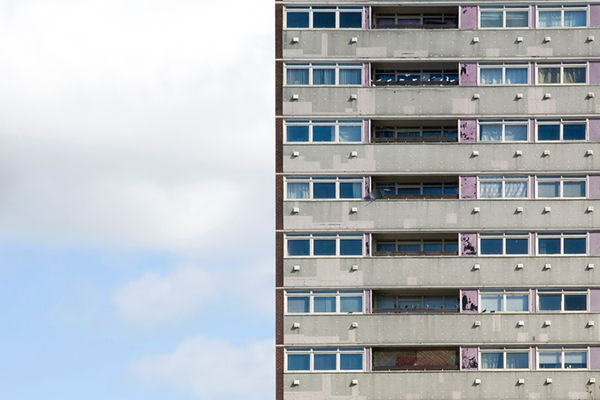The crisis of housing affordability in London has pushed the system of council provided temporary accommodation to breaking point. Numbers and costs have spiralled in the last 5 years as a set of largely uncoordinated responses threaten to compound the problem.
The cause of the growing numbers in temporary accommodation in London can be traced directly to a lack of affordable housing and the solution is to build more. But there is also a need for strategic and coordinated solutions in the immediate term for the 52,000 households, mostly families, in unstable temporary accommodation in London.
The overheated private rented sector has been making people homeless in an unprecedented way, yet successive policies have created reliance on the sector for homelessness relief. At the lower end of London’s lettings market rents have increased 45% in the five years to 2016. Landlords - seeing opportunities for higher rents - are ending tenancies and households are unable to find or access new ones. The loss of an assured shorthold tenancy is now the biggest cause (accounting for 40 per cent) of homelessness in London, up from 10 per cent in 2009.
Leasing properties from private landlords to house families temporarily was central to the successful strategy of reducing the use of inadequate B&B’s in the early 2000’s. The greater cost was deemed worth paying for improved outcomes. The lack of settled social housing for families to move into however resulted in a bottleneck. Efforts to curb the amount of housing benefit going to temporary accommodation began in 2006. Alongside this was a successful drive focused on preventing people becoming homeless in the first place.
When the recession bit homelessness began to rise again. The level of housing benefit made available for temporary accommodation was capped in 2010 and has been frozen whilst rents have rocketed.
Temporary accommodation providers, seeing possibilities for higher returns elsewhere, responded by ending long term leases with councils. Others switched to providing short notice accommodation at more profitable nightly rates. Councils had little choice but to use their own funds to offer additional incentive payments to landlords on top of the housing benefit in order to house people. The sum impact of these actions and responses was that the unit cost of accommodation became more expensive as councils competed for a shrinking pool of similar properties.
From 2011 councils have also been encouraged to make use of the private rented sector to move people out of temporary accommodation. They are now able to discharge their homelessness duty through a suitable offer of a 12 month tenancy whether or not it’s accepted by the family. London boroughs are having to use incentives here as well - nearly £18m was spent on incentive payments to landlords between 2012/13 and 2014/15.
There is a danger of a vicious cycle emerging where households are ejected by London’s private rented sector, placed in expensive emergency housing via the use of incentive payments, then discharged into a short term tenancy with little guarantee of any greater stability.
In addition, the growing gap between the Local Housing Allowance and private rents is causing councils to place households in other London boroughs or out of London. The LHA rate is frozen until 2020 meaning these pressures will continue to build. The homelessness charity Shelter report that half of placements in the last 12 months were out of area. This activity also carries the potential to distort local rental markets. The impact of moving families away from work, school and support networks can wreak havoc with the resilience of families already hit by misfortune.
Donella Meadows describes how a system, when hit with a shock from its external environment, may respond in ways which bring it back into equilibrium or in ways which further compound the environmental conditions which gave rise to the shock in the first place. Temporary accommodation provision in London is a system in crisis, generating positive feedback loops which are further escalating sub-market rents as councils rush to find emergency accommodation whilst compounding the complex challenges facing families.
It seems the principle contained in councils’ duty to house homeless families is in conflict with the decline of available social housing with which to fulfil it. This new model of temporary accommodation as a minimal emergency intervention in a private rented sector that is unwilling to house low income households looks unlikely to work in London without radical changes in security of tenure and price stability.
How then should London boroughs respond in the immediate term? Is it possible to design interventions and coordinate action in ways which guide the system to a new equilibrium?
Many boroughs have in fact been experimenting with creative and strategic interventions that could have the potential to do that - but on a relatively small scale. Boroughs have also successfully cooperated with one another to contain the cost of nightly rates and track placements made between boroughs. Some examples of creative ways boroughs have responded which have potential to be built upon will be covered in a subsequent post.
The RSA Action and Research Centre - in partnership with Trust for London and Policy Lab - will be holding a day workshop to design solutions to London’s temporary accommodation system. The workshop will bring together Senior Housing Officers, Housing Associations, Homelessness Charities, Social Enterprise and the Department for Communities and Local Government.
Download our in-depth briefing paper - which provides an overview of the challenges, examples of recent responses and offers some suggestions for thinking about new interventions.
Related articles
-
Wales of cohesive communities
David Palmer
David Palmer FRSA talks about his work in co-operative housing across Wales and reflects on the Wellbeing for Future Generations Act.
-
A social justice cause for the 2020s – reining in health spending
Anthony Painter
Anthony Painter argues that the state expansionists will win over small statists as healthcare expenditure is destined to increase. But their victory may be a Pyrrhic one unless the growth can be limited so better support can also be given to housing, economic security, education and lifelong learning.
-
The social housing green paper shows Whitehall’s wilful ignorance of social housing
Atif Shafique
The social housing green paper does little to confront the challenges facing the sector.




Be the first to write a comment
Comments
Please login to post a comment or reply
Don't have an account? Click here to register.